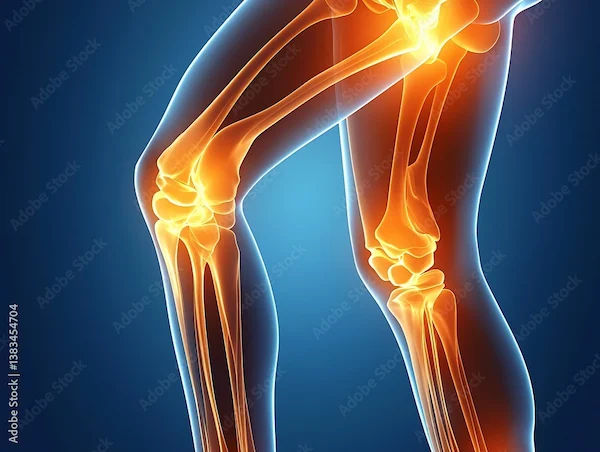Fall Risk Reduction in Hospitals: A Comprehensive Guide
Learn effective strategies for fall risk reduction in hospitals with this comprehensive guide. Improve patient safety and enhance healthcare quality with practical solutions.

Written by
Last updated on 3rd Jul, 2025
Falls in hospitals present a serious challenge, often resulting in injuries, prolonged hospital stays, and increased healthcare costs. Implementing effective fall risk reduction strategies is essential to improve patient safety.
This article provides a comprehensive guide to reducing fall risk in hospitals. It covers preventative measures and the implementation of effective programs.
Common Risk Factors for Falls in Hospitals
Falls are common among persons 65 and older. Several factors contribute to the risk of falls, which are as follows:
Mobility problems (trouble walking or standing up)
Balance disorders
Chronic illnesses
Impaired vision
Certain medicines
Foot problems
Mild cognitive impairment
Many falls result in at least one injury. These might vary from minor bruises to fractured bones and brain traumas.
Strategies for Reducing Falls
The strategies for reducing falls are as follows:
The mobility plan must be followed to ensure safe movement.
Help should be called for when getting up or going to the bathroom.
Essential items, including the call button, should be kept within reach.
Individuals must stand up gradually to avoid dizziness.
The assistive device must be used when getting up or walking.
Lights should be turned on before moving to avoid navigating in the dark.
The surroundings must be kept clutter-free.
Information about recent falls should be shared with the nurse.
The yellow socks and bracelet should always be worn to signal fall risk.
The nurse’s instructions must be followed carefully.
Implementation of Fall Prevention Programs
Implementing fall prevention programs requires addressing key hospital concerns, such as:
Education of Staff: Training both clinical and non-clinical staff, especially during night shifts and weekends, ensures everyone is prepared to reduce fall risks.
Communication of Fall Risk: Improving communication methods between departments, from emergency to admission,s is essential for consistent patient care.
Monitoring and Evaluating Fall Reduction Efforts
Fall reduction efforts can be monitored and evaluated by:
Measuring Fall Rates: Fall rates should be compared before and after implementing a program to determine its effectiveness in reducing falls.
Assessing Risk Factors: Risk factors for falls, such as balance issues, muscle strength, and vision, should be identified through assessments to better understand individual risks.
Analysing Healthcare Claims Data: Checking the healthcare claims data to determine the effectiveness of a program in reducing fall-related injuries in a year is vital.
Role of Multidisciplinary Team in Fall Prevention
Falls can be prevented by tailoring prevention programs to individual needs, addressing specific risk factors and ensuring proper interventions. Below are the roles of a multidisciplinary team in implementing these tailored prevention strategies.
The Physiotherapist
Weak muscles and decreased balance are major causes of rising fall rates among the elderly. The most effective long-term fall prevention strategy combines balance training, strengthening, and walking programs. Physiotherapists can design personalised exercise regimens to improve balance, flexibility and muscular strength.
The Nurse
Problems with bowel and bladder control can impair a person's capacity to remain active, healthy, and independent. Incontinence, frequent urination, and assistance with toileting have been identified as risk factors for falls among residents of aged-care facilities. Nurses can help patients manage incontinence, which might increase their risk of falling.
The Podiatrist
The treatment of the foot, ankle, and related leg structures by podiatrists is essential for standing, walking, and balance. They also train patients in exercises to strengthen the legs and improve overall movement efficiency.
The Dietitian
Nutrition is key to fall prevention, as weakness leads to muscle loss, reduced strength, and mobility. A person’s nutritional status impacts the likelihood of falling, injury severity, and recovery time. Dietitians design balanced diets that boost vitality and provide the energy needed to stay active and strong.
Addressing Fall Risks in Elderly Patients
To address fall risks in elderly patients, the following measures should be taken:
Exercise: The nurse or caregiver should encourage elderly patients to engage in regular physical activity, such as yoga or walking, to improve balance, strength, and flexibility.
Protective Footwear: Patients are advised to wear well-fitting shoes with non-slip soles and ankle support while avoiding high heels or unstable footwear.
Improved Lighting: It is important to ensure that the home is well-lit, particularly in hallways, bedrooms, and bathrooms, to reduce the risk of falls.
Regular Checkups: Routine eye and hearing tests should be arranged to identify any potential issues.
Awareness of Medication Side Effects: If any medications cause dizziness or drowsiness, the doctor should be informed.
Asking About Falls: Inquiring about the patient’s fall history and the circumstances surrounding previous incidents is essential for better prevention.
Conclusion
Fall prevention in hospitals is crucial for patient safety, particularly among elderly patients. By addressing risk factors, implementing tailored prevention strategies, and having a collaborative, multidisciplinary approach, hospitals can reduce fall incidents. Ongoing monitoring and education are key to ensuring these strategies' success.
Consult Top General Physician
Consult Top General Physician

Dr. Vasanthasree Nair
General Practitioner
15 Years • MBBS
Angamaly
Apollo 24|7 Clinic - Kerala, Angamaly
(425+ Patients)

Dr. Dhankecha Mayank
General Practitioner
6 Years • MBBS
Gujarat
Apollo 24|7 Virtual Clinic - Gujarat, Gujarat

Dr. Mohammed Huzef Ul Arifeen
General Practitioner
3 Years • MBBS
Hyderabad
Apollo 24|7 Clinic - Telangana, Hyderabad

Dr. Shaik Abdul Kalam
General Practitioner
3 Years • MD (Physician)
Visakhapatnam
Apollo 24|7 Clinic - Andhra Pradesh, Visakhapatnam
(100+ Patients)

Dr. Praveen Kumar Mukka
General Physician/ Internal Medicine Specialist
21 Years • MBBS, MD General Medicine
Hyderabad
Apollo 24|7 Clinic - Telangana, Hyderabad




